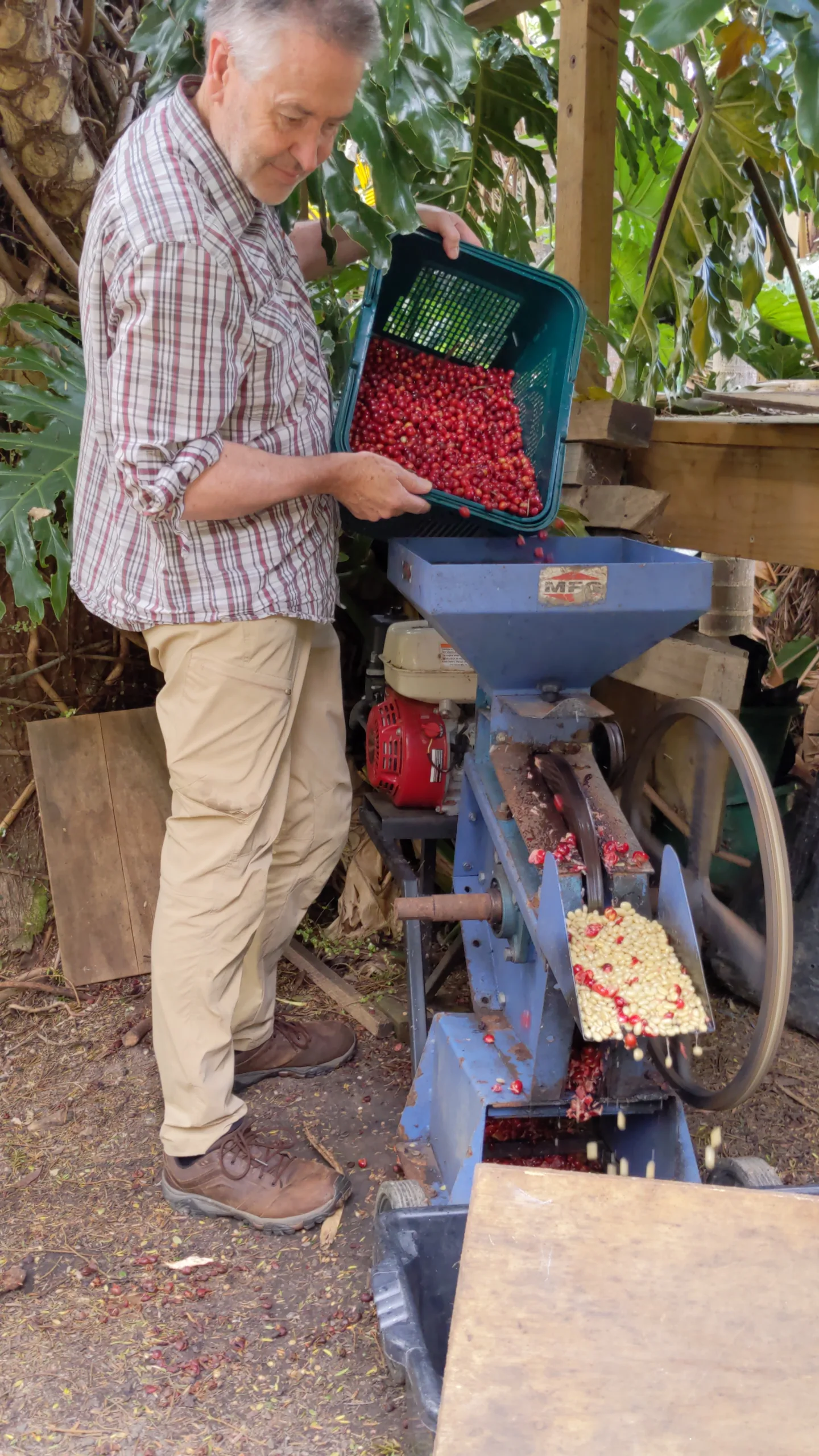Excuse the terrible pun.
I want to thank Logan Collinge of Mojo The Beanery for spending several weekends roasting to order for me, and being such a mine of information.
The first experiment was to take one single origin green bean, and have Logan roast it to common roast levels across the roast spectrum.
The selected Green Bean was a Guatemalan – El Coygoyal, with the following roast levels:
- Light City
- Half City
- Cinnamon
- Medium
- City
- American
- Breakfast
- Dark
- Full City
- Vienna
- Darker than dark
This enabled me to test, extend and refine the computer model.
Testing was making two cups of coffee at a time, A/B. One using the predicted model settings, the other cup shifted up or down the SSDI scale, or varying one parameter e.g ratio. Taste testing used my partner, and various long suffering work colleges, to gain opinions other than my own. Both espresso and filter methods were tested. Testing also was done over the period of a couple of months, to determine the optimum age after roasting for each roast point.
The experiment had to be repeated a second time. This time using specific drop points to fill in some data gaps. A different Single Origin Coffee, a Brazillian – Sito Pedra Menina was used.
- 187
- 191
- 196
- 205
- 210
- 219
- 225
- 230
- 240
The results formed the Rules of Thumb, which is the 150 data point scaffold of the full 5000 data point SSDI.



With respect to Agtron, is that the whole or ground score? Also, since I can measure whole and ground Agtron scores, do I really need the density? Measuring density without using displacement seems prone to error. But obviously displacement will destroy the roasted beans. It also looks like you are assuming settled density, not displacement.
Most home users are not going to have a tool to measure agtron lying around, they are kind of expensive ~$1500 USD for one thing.
They are useful for a roaster, because they already know how the beans bean roasted, they just need to now how far to go, when to stop.
But they are not much use for determining extraction. If you cook a roast at a real high temp, it might be black on the outside, but still tough on the inside. Coffee cooked high and fast will be dark, but still hold a lot of water, be dense and difficult to extract. A piece of meat cook long and low is not going to be black on the outside, but its going to be pull apart tender. Coffee roasted long and low wont be dark, but it will have lost most of the moisture, be brittle, porous and extract really easy. So colour is not the best tool to use. Measuring density is much better.
You dont need absolute density by measuring with displacement. What you need to now is relative density. If you have 2 coffees and you measure them both with settled density density, you know where they are relative to each other. If you have already measured thousands of coffees using settled density, you know where your coffee falls on the possible spectrum.
Settled density is the right tool to use, Agtron is not, displacement is not.
Thank you for this amazing work! Can you share more details of your filter method (e.g. V60) and recipe (e.g. bloom time, number of pours, %water per pour)? This will help readers to better contextualize the recommendations like brew time, and make adjustments for their own recipes.
Hi Aloysius,
Apologies for the very slow response. My area of research and development is in Density Assisted Extraction, using density to mathematically generate recipes for the entire density range, using density to select a starting recipe, and using density as a more effective adjustment mechanism. When it comes to extraction execution for any given method, I would defer to trusted experts. In the case of V60, I would recommend James Hoffman https://youtu.be/1oB1oDrDkHM?si=jgcgax33iCcLfJXm.
To be honest, personally I prefer espresso and use a Flair 58. My partner prefers pour over, but I find it easier to concurrently use a Hario Switch for the pour over while I am simultaneously making my espresso. I know the v60 could potentially produce a better result, but it is the 80/20 rule, the Hario Switch delivers 80% result with 20% effort. It is interesting that even James Hoffman uses a Hario Switch as his daily driver https://youtu.be/QjIvN8mlK9Y?si=kUmNRoEKUtUaczwn
I do want to add links to guides for each method, it is on my to do list, and thanks for reminding me, I should really prioritise it higher.
Regards,
Richard Mayston